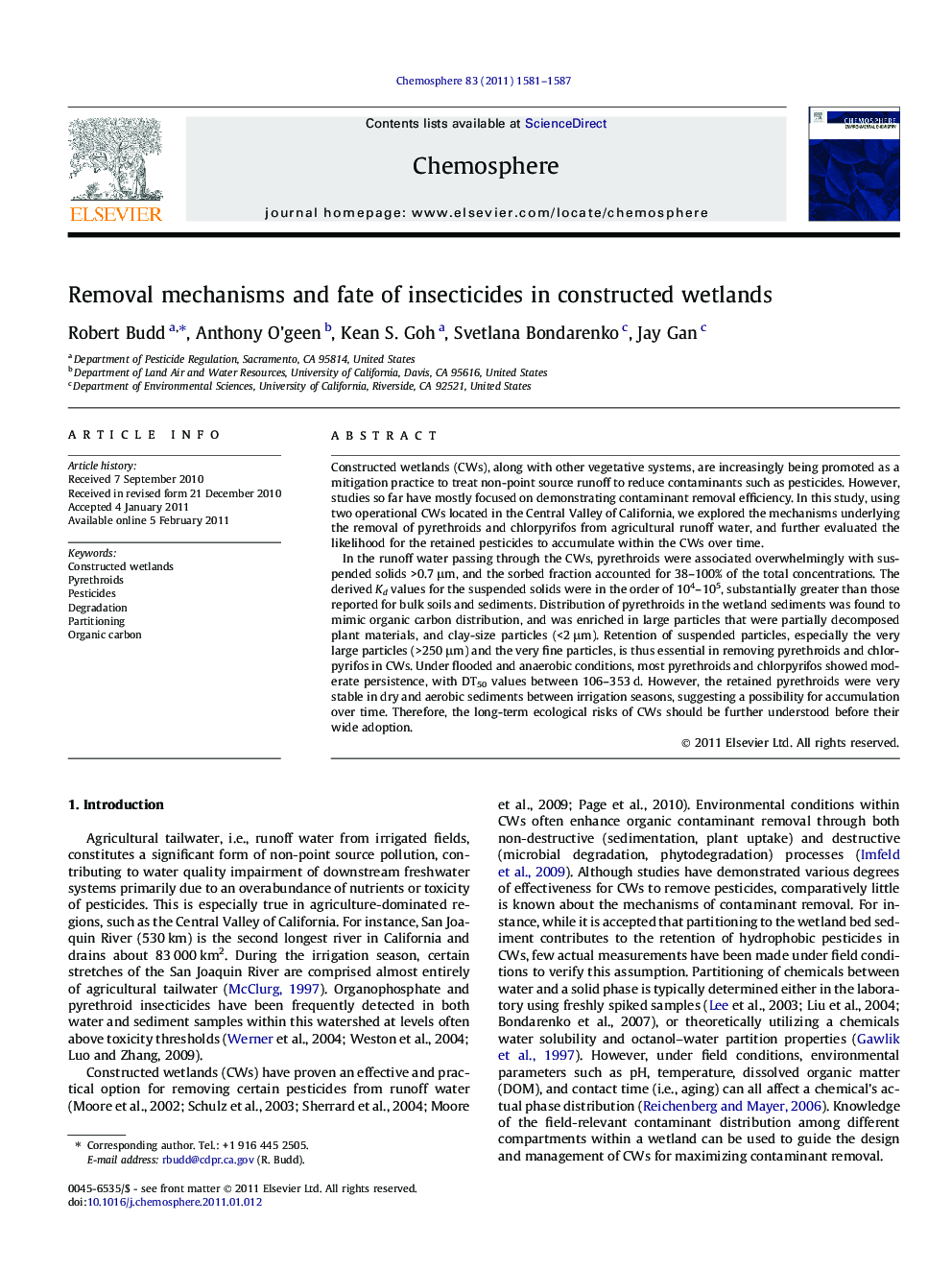| کد مقاله | کد نشریه | سال انتشار | مقاله انگلیسی | نسخه تمام متن |
|---|---|---|---|---|
| 4410657 | 1307557 | 2011 | 7 صفحه PDF | دانلود رایگان |

Constructed wetlands (CWs), along with other vegetative systems, are increasingly being promoted as a mitigation practice to treat non-point source runoff to reduce contaminants such as pesticides. However, studies so far have mostly focused on demonstrating contaminant removal efficiency. In this study, using two operational CWs located in the Central Valley of California, we explored the mechanisms underlying the removal of pyrethroids and chlorpyrifos from agricultural runoff water, and further evaluated the likelihood for the retained pesticides to accumulate within the CWs over time.In the runoff water passing through the CWs, pyrethroids were associated overwhelmingly with suspended solids >0.7 μm, and the sorbed fraction accounted for 38–100% of the total concentrations. The derived Kd values for the suspended solids were in the order of 104–105, substantially greater than those reported for bulk soils and sediments. Distribution of pyrethroids in the wetland sediments was found to mimic organic carbon distribution, and was enriched in large particles that were partially decomposed plant materials, and clay-size particles (<2 μm). Retention of suspended particles, especially the very large particles (>250 μm) and the very fine particles, is thus essential in removing pyrethroids and chlorpyrifos in CWs. Under flooded and anaerobic conditions, most pyrethroids and chlorpyrifos showed moderate persistence, with DT50 values between 106–353 d. However, the retained pyrethroids were very stable in dry and aerobic sediments between irrigation seasons, suggesting a possibility for accumulation over time. Therefore, the long-term ecological risks of CWs should be further understood before their wide adoption.
Research highlights
► We evaluated the partitioning and dissipation of pesticides moving through constructed wetlands.
► Pyrethroids were primarily associated with suspended solids.
► Pyrethroids preferentially sorb to particles high in organic carbon.
► Pesticide loading in a wetland cannot be estimated based on sedimentation rates alone.
► Pyrethroids and chlorpyrifos were moderately stable under aerobic conditions.
Journal: Chemosphere - Volume 83, Issue 11, June 2011, Pages 1581–1587